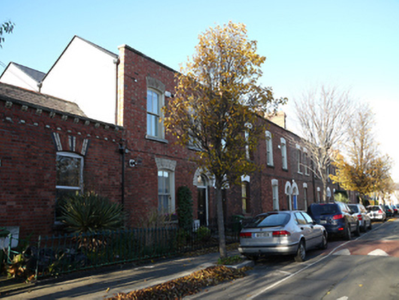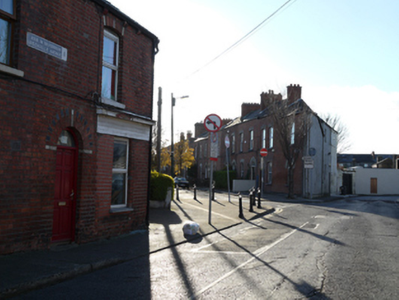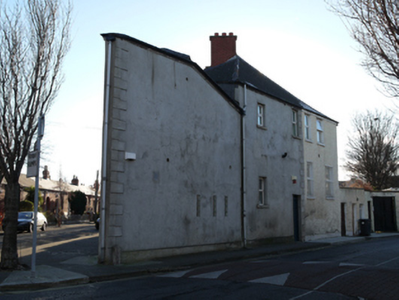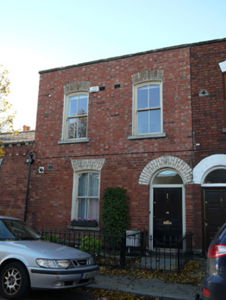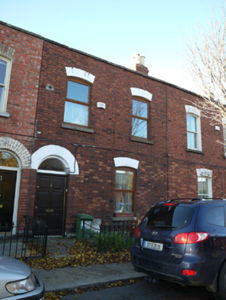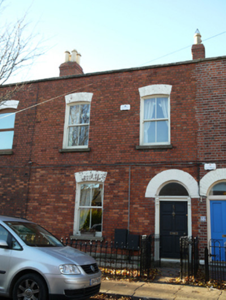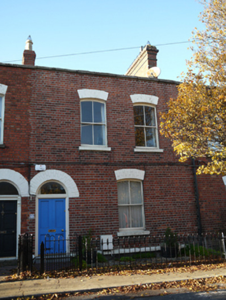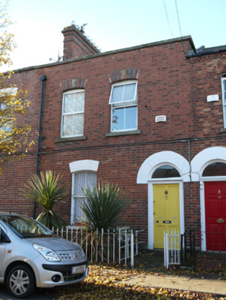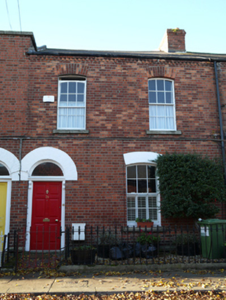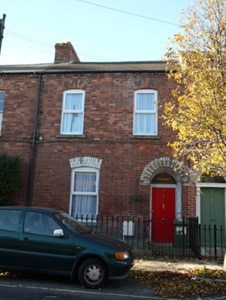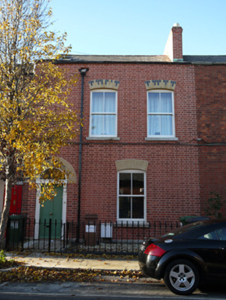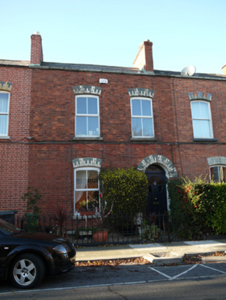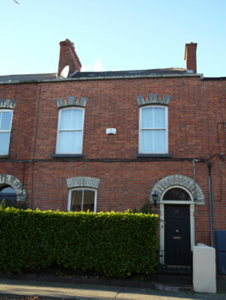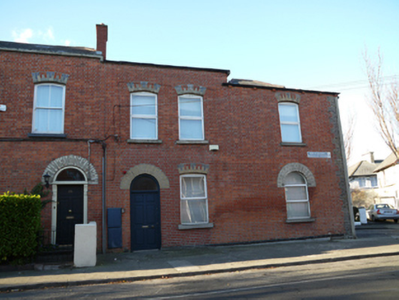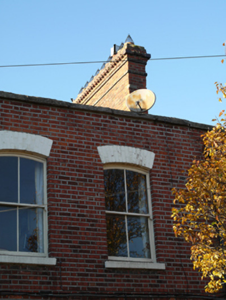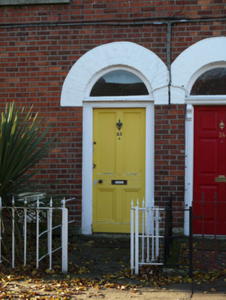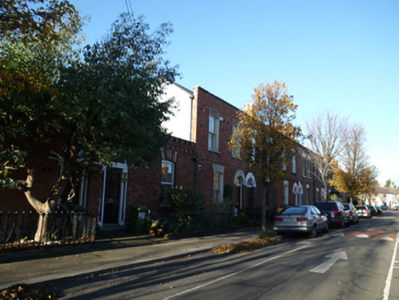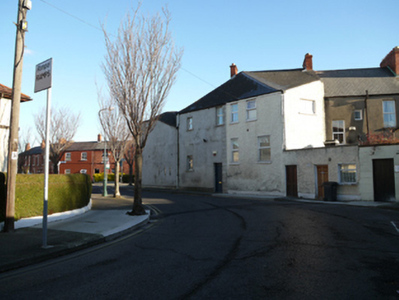Survey Data
Reg No
50080836
Original Use
House
In Use As
House
Date
1880 - 1900
Coordinates
314721, 232810
Date Recorded
09/12/2013
Date Updated
--/--/--
Description
Terrace of eleven two-bay two-storey houses, built c.1890, having returns to rear (west). Three-bay front elevation and triangular plan to number 27B. Some M-profile pitched slate and artificial slate roofs having parapet with cut granite capping to front elevation. Some pitched slate and artificial slate roofs having red brick sawtooth eaves course. Red brick chimneystacks having red brick sawtooth cornices. Red brick walls laid in Flemish bond to front elevations. Rendered walls to rear elevations. Segmental-headed window openings having some polychrome brick voussoirs, cut granite sills, two-over-two timber sash windows, and replacement uPVC windows. Round-headed door openings, some having polychrome brick voussoirs, timber door surrounds, timber panelled doors, and plain fanlights. Front gardens enclosed by cast-iron railings on cut granite plinths, with matching cast-iron pedestrian gate.
Appraisal
This terrace retains much of its Victorian form and character, and fabric including cast-iron railings, timber sash windows and timber doorcases. The repetition of the same house type gives a pleasing coherence to the street. Subtle brick detailing adds decorative interest to the front elevations. Front garden boundaries remain intact, maintaining the early suburban character of the streetscape. The streets in this area were built by private developers in groups of as few as two or three, leading to a lively and attractive variation in decorative finishes in houses built with a similar range of materisls. The street numbering indicates that no.28A and no28B were probably two of the later houses to be built on the street, with no.28B having an unusual form to take advantage of the sharp corner. Greenville Terrace was developed when large tracts of land became available following the sale of the Greenville demesne in the 1870s. The new residential streets provided housing for tradespeople and skilled workers of the city.

